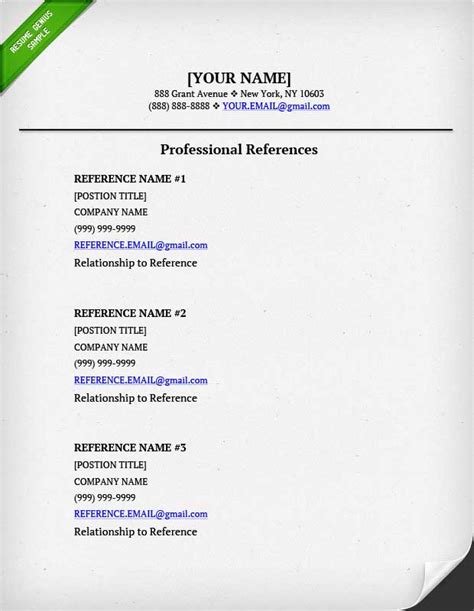Learn the purpose of references, choose relevant sources, format your reference page, and make a lasting impression with this comprehensive guide.Are you in the process of applying for a new job and need to create a resume reference page? Look no further! In this comprehensive guide, we will walk you through the essential steps to creating a standout reference page that will impress potential employers. From understanding the purpose of a reference page to choosing relevant references, formatting the page correctly, and making a lasting impression, we’ve got you covered.
Having a well-crafted reference page is a crucial component of your job application package and can make a significant impact on your potential employer’s decision. Whether you’re a seasoned professional or a recent graduate, this blog post will provide you with the knowledge and tools to create a reference page that will set you apart from the competition and increase your chances of landing that dream job. So, grab a pen and paper and let’s dive into the world of resume reference pages!
Understanding the Purpose
Understanding the Purpose
Understanding the purpose of a resume reference page is crucial in the job search process. This section of your resume is meant to provide potential employers with a list of individuals who can vouch for your professional qualities and work ethic. It offers them a chance to see testimonials and endorsements from previous colleagues, managers, or mentors. Recognizing the significance of this page can help you make strategic decisions when choosing the references to include.
Moreover, understanding the purpose of the reference page can also help you tailor your references to the specific job or industry you are applying for. By recognizing the kinds of qualities and experiences the employer is looking for, you can choose references who can speak to those specific attributes. This can help ensure that the references listed on your resume are highly relevant and impactful.
Finally, understanding the purpose of the reference page can also guide you in how to present this section on your resume. Recognizing that the purpose is to showcase your professional reputation and character, it can lead you to format the reference page in a way that makes the most impactful impression on potential employers.
Choosing Relevant References
When it comes to creating a resume reference page, one of the most important aspects is choosing relevant references. Your references should be individuals who can speak to your skills, work ethic, and overall character. It’s important to choose references who have had direct experience working with you in a professional capacity, such as a former supervisor, colleague, or client. Additionally, it’s essential to consider the relevance of each reference to the job you’re applying for. For example, if you’re applying for a marketing position, a reference who can speak to your marketing skills and experience will be especially valuable.
Another important factor to consider when choosing relevant references is the recency of your relationship with the individual. It’s generally best to choose references who have worked with you within the past 5-7 years, as their perspective on your skills and work ethic will be more current and relevant to potential employers. If you’re a recent graduate or have limited work experience, you may also consider using professors, internship supervisors, or volunteer coordinators as references.
Lastly, it’s crucial to ask for permission from your chosen references before including their contact information on your resume reference page. Not only is this a matter of professional courtesy, but it also ensures that your references are prepared to speak on your behalf if contacted by potential employers. By choosing relevant references who can speak to your qualifications and ensuring their willingness to be contacted, you can increase the impact and effectiveness of your resume reference page.
Formatting the Reference Page
Formatting the Reference Page
When creating a resume, it’s important to pay attention to the reference page as it is the final section that potential employers will see. The formatting of this page plays a crucial role in leaving a positive and professional impression.
Firstly, make sure to use a consistent format throughout the reference page. This includes using the same font, font size, and formatting for each entry. Consistency here is key in presenting a polished and organized document to the potential employer.
Secondly, be sure to include all necessary details for each reference. This includes the individual’s full name, title, company, contact information, and a brief description of how you know them. Double-check that all information is accurate and up to date before sending out your resume.
Making a Lasting Impression
In today’s competitive job market, making a lasting impression is crucial when it comes to creating a resume reference page. This is the final piece of your resume that potential employers will see, so it’s important to ensure that it is professional and impactful.
One way to make a lasting impression on your resume reference page is to choose relevant references who can speak to your skills and work ethic. These references should be individuals who have worked closely with you and can provide specific examples of your qualifications and achievements.
Another important aspect of making a lasting impression on your reference page is to understand the purpose of the page. The purpose of a reference page is to provide potential employers with a list of individuals who can vouch for your qualifications and character. It’s important to choose references who can speak to specific skills and experiences that are relevant to the position you’re applying for.
